In 2018, the Washington Capitals’ Stanley Cup victory put an exclamation point on the growing popularity of the sport in the nation’s capital. To be sure, there have been fits and spurts for the sport since the team landed in the region. Their 1998 Final appearance, moving the team and the rink downtown, and Alex Ovechkin’s tenure are also considered highs for most of the fan base.
But percolating beneath the Capitals’ arrival is a corresponding increase in popularity of ice hockey’s close cousin, “ball” or “street” hockey. Ten years ago, the number of organized ball hockey players could be counted on a couple of hands in the Washington area. Today, the ball hockey community numbers in the hundreds, if not thousands.
This Isn’t Your Dad’s Ball Hockey
Many of today’s NHL stars likely remember playing a loosely-organized game of street hockey as a kid, with friends impatiently waiting for the latest car to drive by so the game could start again. Memories of fighting the setting sun as you try to score the last goal of the day are familiar to many who love the sport.
Today, however, the ball hockey has grown and evolved. At its highest level, it’s played in front of thousands of fans in professional rinks. From afar, you could mistake it for ice hockey. The boards, the surface, the rules, and the uniforms all have the same look and feel.
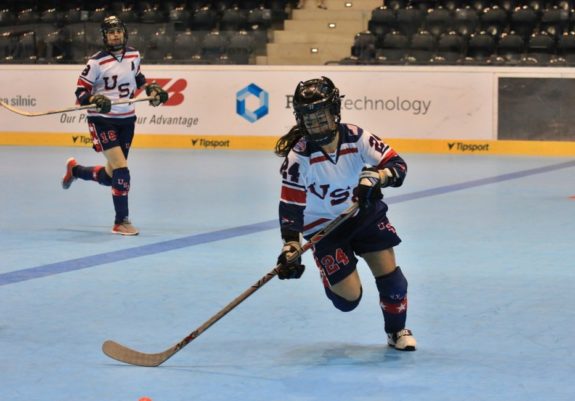
The sport is organized and played at the local, regional, continental and world levels. It attracts highly-skilled players that have played professional ice hockey in both the men’s and women’s divisions. Today, thousands are finding out about the sport for the first time or falling in love all over again.
A Capital Investment in Virginia
As part of the Capitals’ investment in the community, the organization has decided to help local ball hockey rinks renovate and build state-of-the-art facilities. In Alexandria, Va., the team has helped turn an aging facility into a spectacular rink that players are already enjoying.
Wayne Barrett, who runs the rink and the DC Street Hockey League which plays there, is no stranger to the game. He’s been playing his whole life, and became a member of one of the USA Men’s Masters (over age 40) ball hockey teams that represented the country at the world championships in 2014.
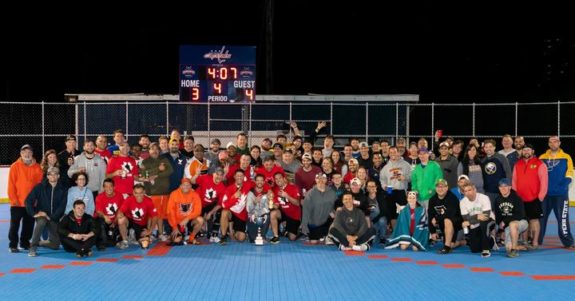
Barrett said that the growth of the game has been exciting locally, noting several teams’ success at regional tournaments and the two local teams that won the North American Championships over the last few years.
“In 2002, we played one night a week, with around 12 players per team. Fast forward to today, we have leagues on two nights a week with about 26 full teams,” said Barrett. “We also rent the rink out to teams for practices and we are looking to start a youth league. The only real constraint on growth for us right now is rink time.”
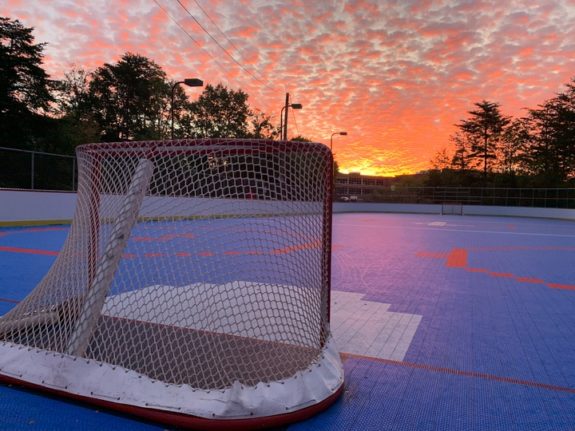
Barrett noted that the Capitals invested all the funds to build the new rink, but the local community had to pay to tear down the old one. To underscore the love players have for their local rink, they collected $40,000 for the effort. In all, the rink now has new boards, a new floor suited for the outdoors, and a new scoreboard.
Barrett added that the Capitals tentatively plan to have the grand opening for the rink on Oct. 30. After that, Barrett said the Capitals plan to fan out across the region and visit schools with equipment and really try to drive interest in the game.
From Humble Origins to a Replica Stanley Cup
The story of how the founder and commissioner of the DCHL, Suds Chand, located in Rockville, Md, built up his local league follows a trajectory similar Barrett’s.
“I remember when I first started playing 11 years ago. It was small indoor gym. There was nothing available in Maryland or DC at the time. I remember thinking … someone needs to start one,” said Chand. “As it turns out, that someone was me.”
The DCHL started in earnest about a year later playing only a couple of games a night on Sundays starting at 9:30 pm. The league had about 40 players spread over four teams with goalies assigned to two teams in a gym with no heat or air conditioning.
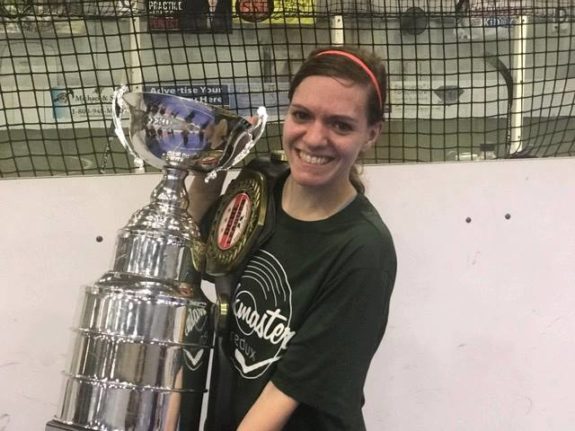
Today, the league boasts 33 teams on Sundays from 10:00 am until 10:00 pm and another 18 teams that play on Wednesday nights. Over the two nights, there are about 600 players now, 100 of them women.
“We have always maintained that we are a co-ed brand. We always need more women players … we are dedicated to getting as many women involved as possible. Now you have husbands and wives, mothers and daughters, your lifetime partner or someone you are dating playing on the same team,” said Chand.
DC Emerging as Ball Hockey Power
While teams based out of DC might have been able to catch some more established teams out of places like Pittsburgh or Philadelphia off guard at regional tournaments a few years ago, that isn’t the case now.
Two teams from the area have won the North American Ball Hockey Championships played every year outside of Philadelphia, hosting teams from both the U.S. and Canada. In addition, several players from DC have made the U.S. national teams representing their country at the world championships, played every two years.
Jason Kelly, president of Cool Hockey Events, the entity that organizes the North American championship tournament, reiterated that the DC region is an emerging powerhouse.
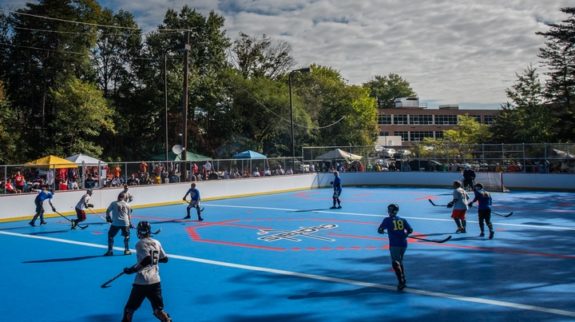
“For someone who has come up through the ball hockey community, watching what is happening in the DC area for ball hockey is fantastic. The Capitals are also really lending a helping hand. The emergence of DC is undeniable. They are constantly helping the sport grow and spread,” said Kelly, who also served as the general manager of the U.S. Women’s National Ball Hockey Team.
The sentiments were echoed by Jamie Cooke, former U.S. Men’s National Team player and general manager, “Ball hockey has always been at the grassroots level of the NHL. I am happy to see the new rinks going up around the area that will further develop the passion for the sport. Hopefully the new locations can mimic the success of what Wayne is doing with DC Street Hockey and with leagues across the region.”
The Capitals are banking on it.